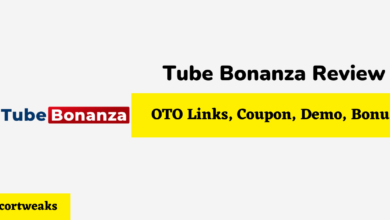What Does The Oculus Quest 2 Link Cable Do?

If you’re new to the Oculus Quest 2, then there are a few things you’ll need to know before you get started. A term you’re going to hear a lot is Oculus Link; you’ve probably also heard about the $79 Oculus link cable and are probably wondering whether or not you need it to start using your Oculus Quest. Don’t worry; we’re here to answer all your questions.
The oculus link cable allows you to connect your PC to your Oculus Quest headset; this allows you to utilize your PC’s processing power to play PC VR games which generally require more GPU intensive than what the Oculus Quest can handle on its own.
Let’s dive a bit deeper into the topic and look at whether or not you can use a third-party cable instead of Oculus’s official one, as well as other methods you can use to connect your PC to your Oculus Quest 2 . Let’s dive in!
What Does The Oculus Quest 2 Link Cable Do
The Oculus Link cable allows you to connect your PC to your Oculus Quest 2 headset allowing you to play PC VR games, such as steam VR games and more.
So here’s what you need to know the official Oculus Link cable is a USB 3.0 fiber-optic cable with dual-function capabilities, meaning it allows you to charge your device & play at the same time.
However, there is one issue, it costs $79. Now the good news is users can use any third-party cable. As long as the cable is a high-quality cable, there should be no difference in performance.
Do I need to use The Official Oculus Quest Link Cable?
No, you can use any USB to USB-C cable. Originally the Oculus link required a USB 3.0 cable; however, since the V17 software update, the Oculus link is now compatible with 2.0 cables.
USB 2.0 offers a transfer rate of around 480 Mbps, whereas USB 3.0 cables offer 4,800 Mbps, which is equal to around 5 GB.
So what difference will it make?
In terms of the gameplay experience and image quality, there is no difference; the main difference, however, is the ability to charge your device while playing.
USB 3.0 provides enough power to keep your Oculus Quest charged for longer, even while playing, as it provides up to 900 mA, whereas USB 2.0 cables only provide up to 500 mA. So your headset will discharge a lot faster with the USB 2.0 cable while playing.
Does The Oculus Quest 2 Come With a link cable?
The Oculus Quest 2 does not come with a link cable. However, it does come with a USB 2.0 charging cable which can be used for Oculus Link; however, it’s important to note that the cable is only one meter long, which is definitely too short for most games; you will, however, be able to use a USB extender cable which can extend the length of your cable.
Is the Oculus link cable necessary?
The Oculus Link is not necessary; it’s mainly used if you want to connect your Oculus headset to your PC to enjoy PC VR games. If you don’t plan on playing PC VR games, then you don’t need to worry about the Oculus Link whatsoever.
Additionally, if you do want to play VR games but don’t want to use a cable, there is an alternative option to connect your Headset to your PC, and that’s with Oculus Air Link or Virtual Desktop.
Oculus Air Link – Connect Your Oculus to your PC wirelessly
Air link allows you to connect your Oculus headset to your PC wirelessly, and the good news is that it’s completely free!
What do you need to get started with Oculus Air Link:
- PC/Laptop
- Oculus Desktop App
- Router with an Ethernet Cable
- Oculus Quest 2 headset
How To Setup Air link:
The first thing you’ll need to do is download the Oculus Desktop App from Oculus’s official website. After that’s done, here’s how to set everything up:
- turn on your headset and press the Oculus Menu button on your right touch controller
- locate & select the experimental features tab
- Toggle on Air Link
- Read the Air Link’s requirements and select continue
- Select the Air Link button on the left to initiate pairing.
- Follow the instructions provided on the screen to complete the process.
- Select Confirm on your Oculus desktop app.
- Put your headset back on, and click on Launch to begin.
And that’s it! You should now be able to utilize your PC’s processing power wirelessly.





